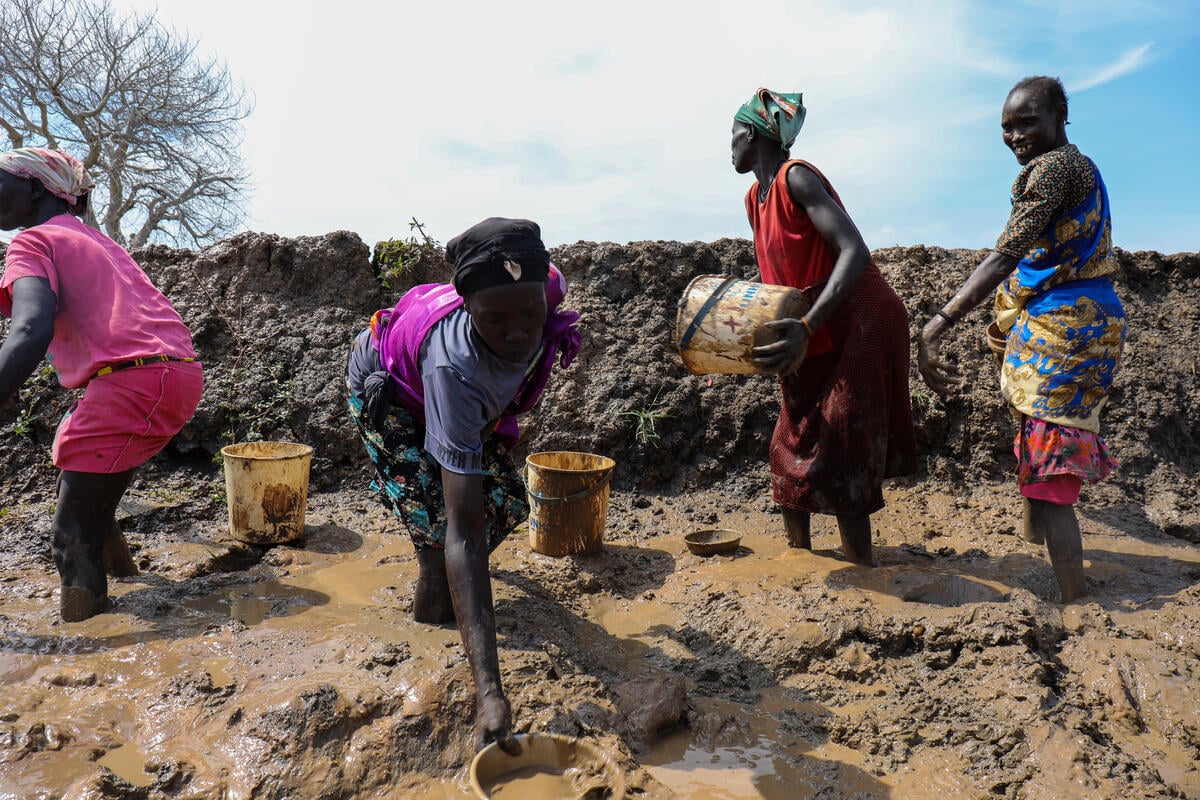Colombian conflict drives displaced to a life of fear on a garbage dump
Colombian conflict drives displaced to a life of fear on a garbage dump

LAS DELICIAS, Colombia, 25 October (UNHCR) - Only a few minutes away from the centre of the eastern city of Cúcuta, with its designer shops and colonial-style houses, the approach to Las Delicias is like a vision out of Dante's Inferno. Billows of smoke rising from a large rubbish dump on the edge of town obscure the view downhill onto what turns out to be a sprawl of wooden shacks and corrugated iron huts built amidst the city's waste.
Until only five years ago, this was a wasteland. Today, Las Delicias is home to some 3,000 people - more than 570 families at last count, the vast majority of whom settled here after fleeing violence in other parts of Colombia. And the numbers keep rising.
"A lot of people have arrived in the past year," says Rosa Martinez, whose family was one of the first to settle in Las Delicias four years ago. "We do what we can to help but there are a lot of problems. We live on a rubbish dump so a lot of children get sick; there's not much we can do about that."
There is no doctor in Las Delicias and no school for the children. There is also no running water and no sanitation. As one of the longest-standing residents, Rosa Martinez is doing what she can to organise the community in order to get help from the local authorities, an initiative that has the full and active support of UNHCR. "It is very slow work," she says, "but in the past few months we have started to see some results."
Part of the problem is that, officially, the neighbourhood does not exist. Las Delicias is what's known here in Colombia as an "invasion," a concentration of squatters' dwellings built illegally on land that is very often unsuitable for human habitation.
There are places like Las Delicias in and around every big city in the country. Local authorities can be slow to recognise the existence of these neighbourhoods and to make basic services available, yet many displaced people simply have nowhere else to go.
Urban displacement is one of the biggest challenges facing the Colombian government in its work to assist the three million people around the country displaced by the internal armed conflict. The conflict is often at its most intense in remote rural areas, so many of the displaced leave the countryside to take shelter in big cities. They have few skills to enable them to prosper in their new urban environment and often end up in poor neighbourhoods like Las Delicias, where they remain extremely vulnerable to further violence.
"Displaced people who arrive in big cities are at very high risk of becoming the victims of criminal gangs," says Roberto Meier, UNHCR Representative in Colombia. "They suffer from extortion and their children are pushed into prostitution or into gangs. Even worse, they sometimes fall prey again to persecution from the same irregular armed groups they fled from in the first place. The result is that many people are forced to displace again, sometimes within the same city."
And when they do, their situation often goes from bad to worse, as in Maurizio's* case. Until earlier this year, Maurizio had managed to hang on to the family farm in his native Catatumbo - one of Colombia's most troubled regions - but an upsurge in fighting around his village finally forced him to flee. He arrived in March in one of Cúcuta's suburbs, where only a few months later he was savagely beaten up by a gang of armed youths patrolling the district.
Maurizio fled again, this time to Las Delicias, where with the help of his new neighbours he has just finished building a very basic hut of plastic sheeting and corrugated iron at the bottom of the hill. He still looks like he is in shock: the hope of finding a safe haven has become even more elusive after this second displacement.
"Having to leave the farm was the hardest decision in my life," he says, "but when I arrived in Cúcuta I thought at least I could live in peace. Now every day I think that I may have to move again - it has happened twice, who or what is to stop it from happening again?"
Colombia's Constitutional Court ordered this summer that such cases of intra-urban displacement should be recognised and addressed. For now, however, no clear mechanism is in place to help people like Maurizio. He registered as displaced with the authorities soon after arriving in Cúcuta, but his case has not yet been processed. He will get no extra assistance to cope with his second displacement.
By Marie-Hélène Verney in Cúcuta, Colombia
* Maurizio's name has been changed to protect his identity









